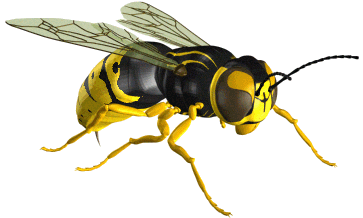
Developed in cooperation with Virginia Tech

© Alexei Sharov (copyright info) | Developed in cooperation with Virginia Tech |
 Home  Virtual Insects  CAVE Insects  Stereoscopy  How to Build Virtual Insects  Help    | 
 A running cockroach; move its wings and legs! A running cockroach; move its wings and legs!All images were optimized and now navigation is faster.
Welcome to the world of virtual insects!Besides learning insects, you will learn new computer technology which is called virtual reality. Virtual reality is a computer interface that maximizes our natural perception abilities. Static two-dimensional images are often deceiving; it may be hard to reconstruct scales and distances between objects. Thus, it is important to implement the third dimension and to bring depth to objects.
There are two major components of three-dimensional virtual reality:
|
|
Best virtual reality implements both movement and stereoscopy. However, at this point you can view it only using special graphical computers (SGI). In the section about CAVE insects we describe one of the most sophisticated virtual environments, the CAVE, which runs on a SGI supercomputer.
|